Denmark is located in Northern Europe and is the smallest country in Scandinavia. The capital of Denmark is Copenhagen and its official language is Danish and it has a monarchy. The sights of Denmark are very diverse and it can be said that there are special sights for every taste. The currency of Denmark is the Danish krone and it is a member of the European Union, but it is not part of the Eurozone.
Denmark is considered one of the safest cities in the world and the crime rate is very low. In addition, Danish people are among the list of the happiest people in the world, and the reason is that they take life easy, and most importantly, their lives are of high quality and they live in prosperity and comfort. It goes without saying that the cost of living in Denmark is very high and they also pay a lot of taxes; However, Danes do not have unemployment problems, most of its people are educated and their income is sufficient to cover all living expenses; That is why they have a comfortable and happy life.
The sights of Denmark have a special attraction for tourists with their unique beauty. From Denmark’s countless museums that bring centuries of history to life for tourists, to its attractive colored houses and its alleys and streets, they have all joined hands to double the charm of Denmark.
If you are planning to travel to Denmark, it is not a bad idea to stay with tourismassist in the following article to get to know some of the most important tourist attractions in Denmark that are located in its various cities.
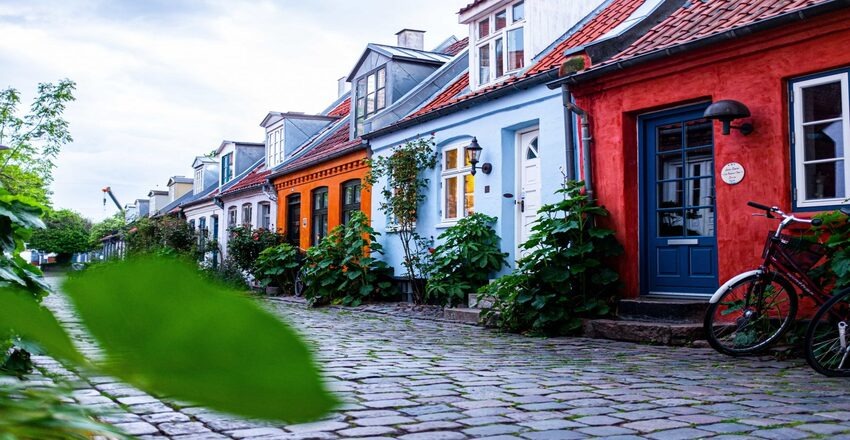
Sights of Denmark
1. Tivoli Gardens, Copenhagen, Denmark
One of the amazing places to visit in Denmark is the Tivoli Gardens, which is located in the city of Copenhagen. Usually, most tourists include a visit to Tivoli Gardens in their Copenhagen Denmark tour plan. This Danish tourist attraction dates back to 1843 and it is interesting to know that Tivoli is one of the inspiring attractions of the famous Disneyland concept park. In Copenhagen’s Tivoli Gardens, you can enjoy a wide variety of attractions such as roller coasters, merry-go-rounds, and other such games; Also, a puppet theater, various cafes and restaurants, several gardens, and a concert hall are other facilities of the Copenhagen Tivoli Gardens.
Since Copenhagen Tivoli Gardens is one of the popular filming locations and is considered a real symbol of Copenhagen, Denmark, it can be said that it is known to most people in the world.
At night, the fireworks display in this garden lights up the sky of Copenhagen, and in winters, Denmark’s Tivoli Gardens are decorated with colorful lights and interesting Christmas decorations. During the summer season, you can also enjoy rock concerts held on Friday nights for free.
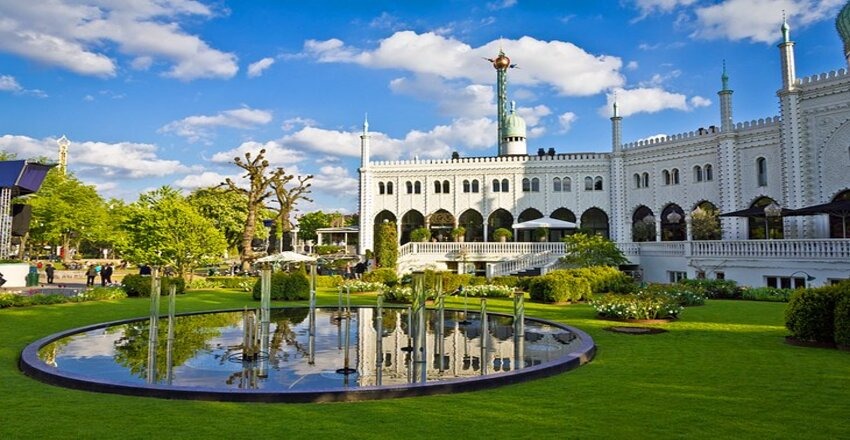
Tivoli Gardens, Copenhagen, Denmark
2. Nyhavn, Copenhagen; One of the most famous sights in Denmark
Nyhavn, which is one of the almost new ports of Copenhagen, Denmark, is considered one of the most famous sights in Denmark. In fact, it must be said that Nyhavn is the star of countless postcards and artistic pictures of tourists, especially on Instagram. Walking and watching Nyhavn’s impressive colorful buildings, drinking coffee in the style of Danish people’s culture, watching the sunset from this spectacular harbor and taking pictures will give you an unforgettable memory of Denmark.
Nyhavn, Denmark, is located in the back part of Amalienborg Palace and although it was once considered a notorious place; But today colorful houses, diverse restaurants, and ships, some of which have become museums, have given Nyhavn a new life. Today Nyhavn is one of the most popular sights in Denmark among tourists and locals. If you are one of the adventurous tourists, you can board one of the cruise ships and go on a sea tour to enjoy watching the amazing scenery.
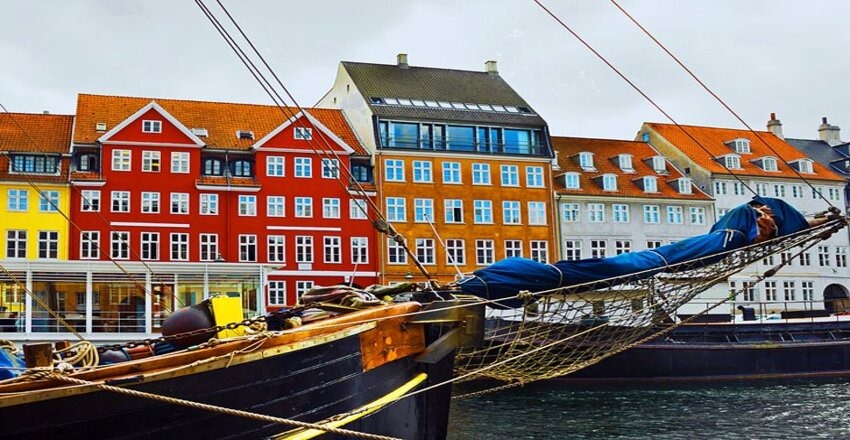
Nyhavn, Copenhagen; One of the most famous sights in Denmark
3. National Museum of Denmark (National Museum), Copenhagen
The National Museum of Denmark can be reached by a ten-minute walk from Tivoli Gardens. Visiting the National Museum of Denmark takes you to the heart of Danish history and culture. This museum consists of an impressive collection of Danish antiquities, such as the 2,000-year-old Sun Chariot, Danish porcelain and silverware, 18th and 19th century costumes, antique furniture, and Gothic and Romanesque church items.
Completing this journey into the heart of Denmark’s history, you can visit the incredibly interesting ethnographic exhibition, which, in addition to Danish artifacts, also displays artifacts and tools from Asia, Africa, and Greenland.
In the children’s museum, many entertainments are provided for them; For example, children can dress up in period costumes, ride a Viking ship and take pictures, and they can also visit old 1920s-style classrooms.
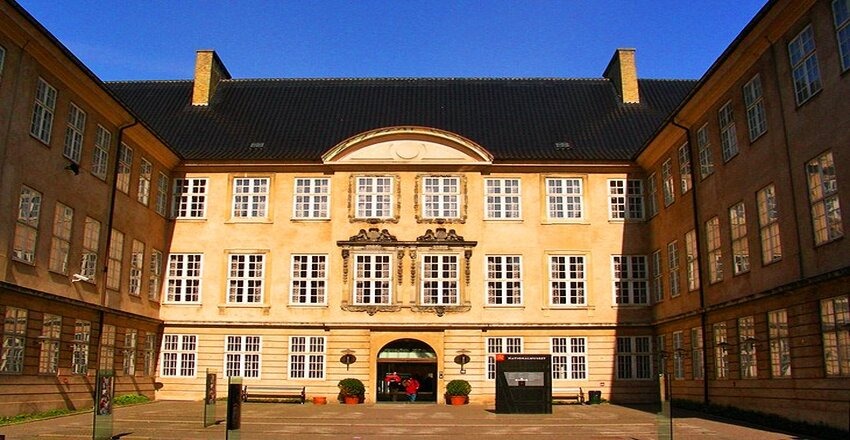
National Museum of Denmark
4. National Gallery of Denmark (Statens Museum for Kunst), Copenhagen
Among other places to visit in Denmark, you can mention the National Gallery of Denmark, which is located in the popular city of Copenhagen. The National Gallery in Copenhagen is home to Denmark’s largest art collection. The early exhibitions of this gallery were once based in Christiansborg, but were moved to the current location in the late 19th century. This relocation program not only significantly expanded the area of the National Gallery of Copenhagen, but also significantly brought natural light into the interior of the museum.
This museum not only covers more than 700 years of European and Scandinavian art, but also exhibits paintings by famous artists such as Picasso, Edvard Munch, and Dutch masters and so on. Unsurprisingly, the gallery also houses an excellent collection of Danish art. There is also a cozy and pleasant cafe in the National Gallery of Denmark, which is a great place to have coffee and drinks and watch the surroundings.
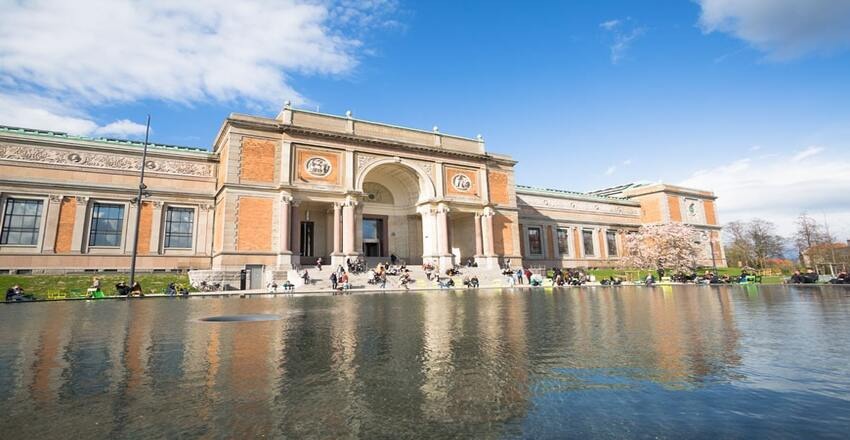
Statens Museum for Kunst
5. Christiansborg Palace, Copenhagen; One of the most amazing sights in Denmark
One of the most amazing sights in Denmark is Copenhagen’s Christiansborg Palace, which is located on the small island of Slotsholmen in the center of Copenhagen. You can find the seat of power of the Danish government in the Christiansborg Palace in Copenhagen, Denmark. With more than 800,000 years of history, Christiansborg is the seat of power of the Kingdom of Denmark, and today is a secure seat for the Parliament, the Prime Minister’s office and the Danish Supreme Court. If you are a fan of the TV series Borgen, you must be familiar with the environment and conditions of this palace. Several parts of the palace are still used by the royal family, but much of it is open to the public. It was in 1167 that Bishop Absalon built the fortifications of Copenhagen; While visiting Christiansborg Palace, you can see the medieval castle as well as the ruins of the bishop’s castle, which was destroyed in the 14th century.
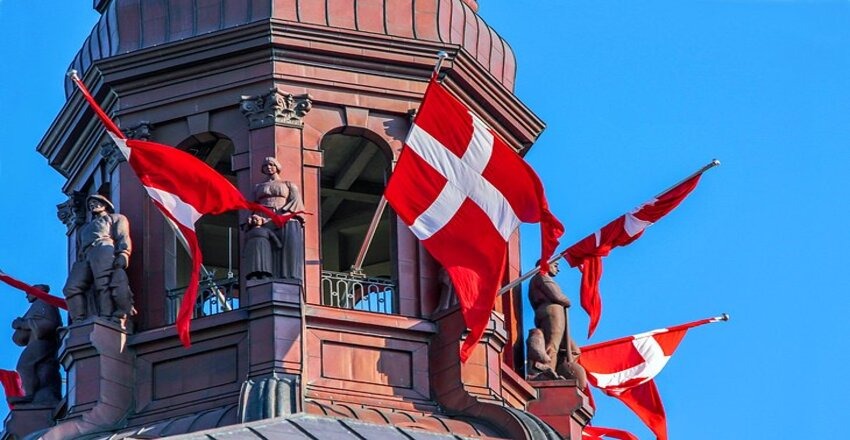
Christiansborg Palace, Copenhagen; One of the most amazing sights in Denmark
6. Frederiksborg Palace and Museum of National History
One of the most stunning sights in Denmark is Frederiksborg Palace, which was built by King Christian IV in the early 17th century; Since 1878, it has hosted the Danish National History Museum. The museum’s collection focuses mostly on artworks that depict Denmark’s history and includes a tour of the castle’s interior, where visitors can see the rooms that once housed the Danish nobility and royalty. Sights outside the palace and its exterior include the Neptune Fountain, a pair of round towers once occupied by the Danish court clerks and sheriffs, and beautiful relief sculptures (depicting the gods Mars and the Moon) on the facade of the building where The audience used to go there to meet the royal people.
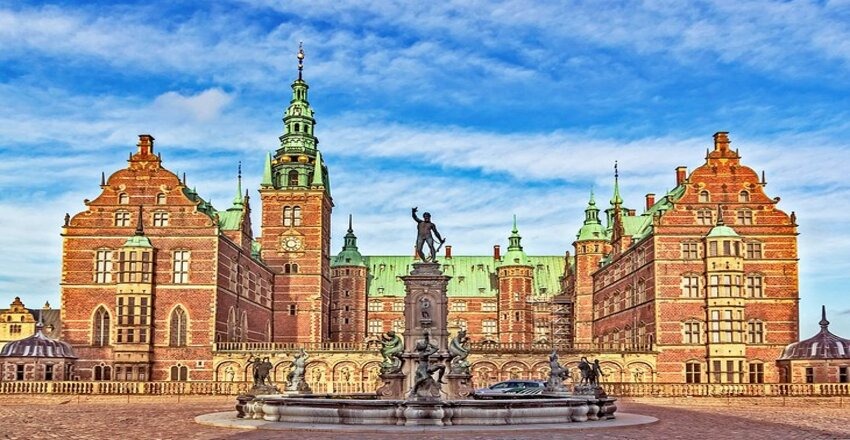
Frederiksborg Palace and Museum of National History
7. The LEGO House, Billund
The Lego House in Billund, Denmark is one of the most popular and famous sights in Denmark, not only among children, but also among adults. The Lego House is the iconic birthplace of the Lego bricks that we all had childhood memories with; For this reason, it is considered a family attraction that all people of different ages enjoy visiting Lego House Denmark. One of the best things about Legoland is that it is free to visit. The LEGO House includes 9 interactive playgrounds, the Tree of Life, a 15-meter LEGO tree, and 3 outdoor playgrounds. Also, tourists can discover “Experience Zones” by buying tickets. Each territory is represented by a specific color; For example, the classic brick colors are red for creativity, green for role playing, blue for perceptual challenges, and yellow for emotions. Visitors also have the opportunity to learn more about the history of Lego and its founders.

The LEGO House, Billund
8. Copenhagen’s Orsund Bridge, a Scandinavian symbol
After several decades of planning and discussion, Copenhagen’s Orsund Bridge quickly became a Scandinavian symbol and one of Denmark’s tourist attractions. The Orsund Bridge is a sea bridge that connects Denmark to Sweden. This bridge is built in both road and rail ways and has 2 railway tracks and 4 car lanes, and you can travel this route by train or car. Copenhagen Denmark’s Orsund Bridge starts with a tunnel so as not to interfere with the incoming and outgoing flights of Copenhagen Airport, which is located nearby; But when it comes to the Swedish city of Malmö and the artificial island of Pirholm, it is in the form of a bridge. This structure was opened in 1999 and today it connects the island of Zeeland, which is the largest island of Denmark, to the southwest coast of Sweden, especially to the port of Malmo, which is the third largest city in Sweden.
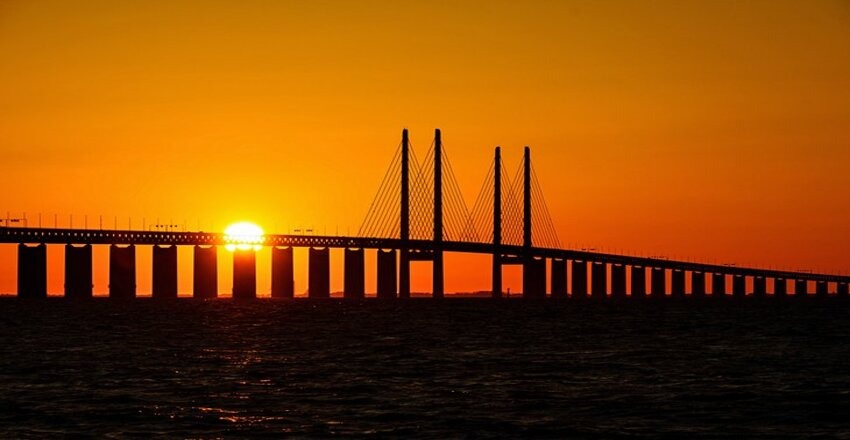
Copenhagen’s Orsund Bridge, a Scandinavian symbol
9. Lyngby Open Museum, Copenhagen
The Lyngby Open Air Museum or “Frilandsmuseet” is one of the attractions of Denmark, which is only 15 kilometers away from Copenhagen. Lyngby Open Air Museum is part of the Danish National Museum and usually most tourists who are interested in learning about Danish culture and history also visit this museum. The museum occupies 35 hectares of land and includes wonderful country houses, farm buildings, beautiful cottages, and old mills from various Danish towns. Lyngby Denmark Open Air Museum is actually a living museum and you can feel the atmosphere of the traditional life of the old Danes there. In addition, in this museum, you can enjoy visiting ancient breeds of domestic animals, magnificent historical gardens for walking and taking photos, old houses in the style of Schleswig-Holstein and Sweden, and a wide space for picnics. Also, you can take a carriage ride around and enjoy the unique scenery.
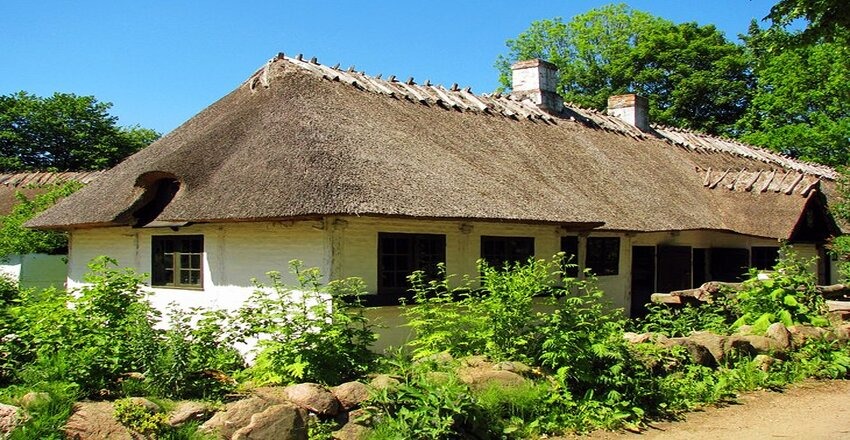
Frilandsmuseet
10. Kronborg Slot, Helsingor
Cranborg Castle, also known as Hamlet, is a historical fortress located in the city of Helsingør, Denmark. Kranborg Castle is one of Denmark’s most popular tourist attractions. This historical castle was built between 1574 and 1585 by Frederick II. The architecture of Cranburg Castle is in the Dutch Renaissance style. The immortal work of William Shakespeare named “Hamlet” has been performed many times in this castle. Denmark’s Kronborg Castle is not only the home of Shakespeare’s Hamlet; Rather, it is considered a UNESCO World Heritage Site. For this reason, it is among the most visited historical sights in Denmark located in the city of Helsingør.
This fort is located in the middle of the sea and due to its unique appearance, it is now open to visitors as a maritime museum. It is interesting to know that Kronborg is also considered one of the most important castles in Northern Europe. This fort was used as a barracks for about a century and was rebuilt in 1924. In the southern part of the castle, there is the chapel of the castle, which was saved from a fire in 1626 and has a magnificent interior decoration in the Renaissance style with German wood carvings.
In the northern part of Denmark’s Cranborg Castle, you can also visit the Great Hall of the Knights.
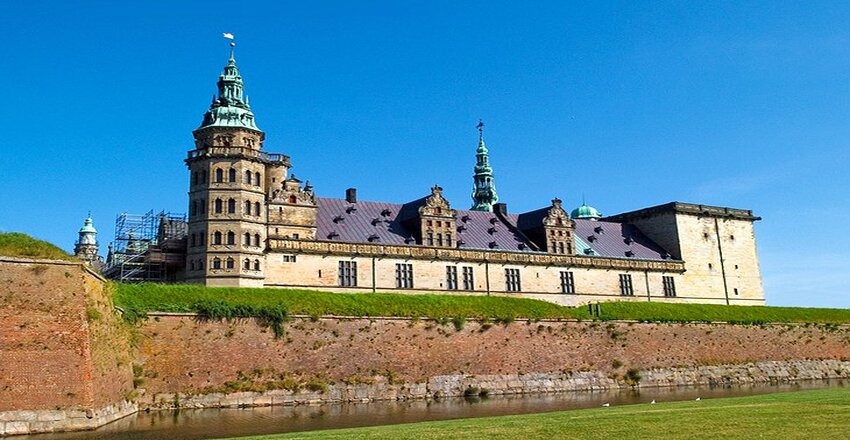
Kronborg Slot, Helsingør
11. Egeskov Castle, Denmark
Denmark’s Eggskov Castle, which is like the fairy tale castle, is only 30 minutes away from Odense by car. Eggskov Castle is located on Finn Island in Denmark and was built in 1554 by Franz Brockenhus for defensive purposes. Franz built this fortress in the middle of the lake with a base made of oak tree trunks. Compared to other European castles of this style, this castle is very well preserved; Although it changed hands and changed its use over the centuries, it eventually became a beautiful castle in a green environment and a modern farm.
This castle consisted of two houses connected by a thick and double-layered wall; The purpose of this architectural style was that in case of war, they could evacuate the first house and continue fighting in the second house. The two-layer wall of this castle is built so thick that it has hidden stairs and a pond to provide water during the siege.
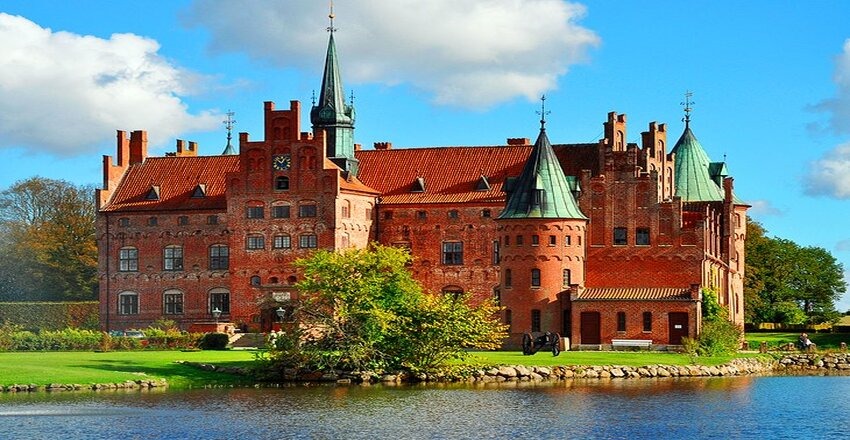
Egeskov Castle, Denmark
12. Hans Christian Andersen Museum, Odense
A trip to Denmark is not really possible without visiting its cultural and artistic tourist attractions; Because, like it or not, these Danish attractions attract the attention of every passerby. Especially the Hans Christian Andersen Museum in the city of Odense, Denmark, where the legendary fairies of the stories were formed in the local community. The Danish Hans Christian Andersen Museum dates back to 1908 and is dedicated to the author’s life and work. You can see all of Andersen’s works of art, notes and sketches in this museum. The dome hall of the museum is also decorated with scenes from Andersen’s real life. On the southwest side of the Odense Cathedral, you can also visit Hans Christian Andersen’s childhood home, which is now part of the museum.
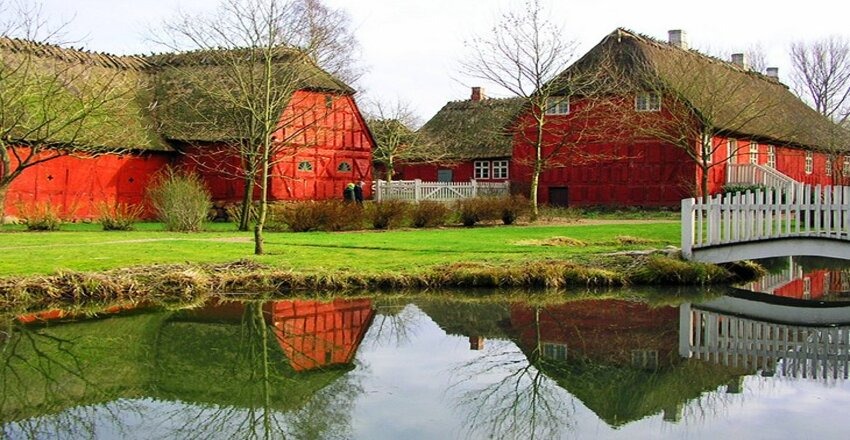
Hans Christian Andersen Museum, Odense
13. Viking Ship Museum in Roskilde, Denmark
The Viking Ship Museum in Roskilde, Denmark is one of the most interesting sights in Denmark, which gives tourists a unique opportunity to see how the famous Viking ship was built. In this museum, tourists can see closely how Vikings built ships without modern facilities. If you have seen the series Vikings, you know that the Vikings had a unique skill in building ships and navigating the sea without facilities. Also, visitors to the Viking Ship Museum can see how modern shipbuilders repair and restore old Viking-style ships.
The Ship and Boat Warehouse is located next to the Viking Museum, where traditional Viking methods are used to build or repair similar old boats.
In this museum, visitors can learn about the Viking Age and the impact of the main role of sea life in saving the life and culture of the Danes. The central exhibition of the museum is called “Viking Ship Hall”, which exhibits 5 historical ships used by Vikings. These ships have been discovered and repaired after extensive and painstaking excavations under the sea.
One of the newest and most special entertainments of this museum is the “High-tech experience” called “Climb Aboard”, where tourists are completely immersed in the life of a Viking ship (almost something similar to a 3D cinema or 4D but in a more advanced and realistic form). This interactive experience is complete with a special suit for those who want to dive aboard the Viking ship in a more realistic way. In this case, they can also explore the interior of the ship and its rooms, and even since this technological journey takes place in calm and turbulent seas, changing weather, during the day and then at night, they can fully feel the changes in the environment.
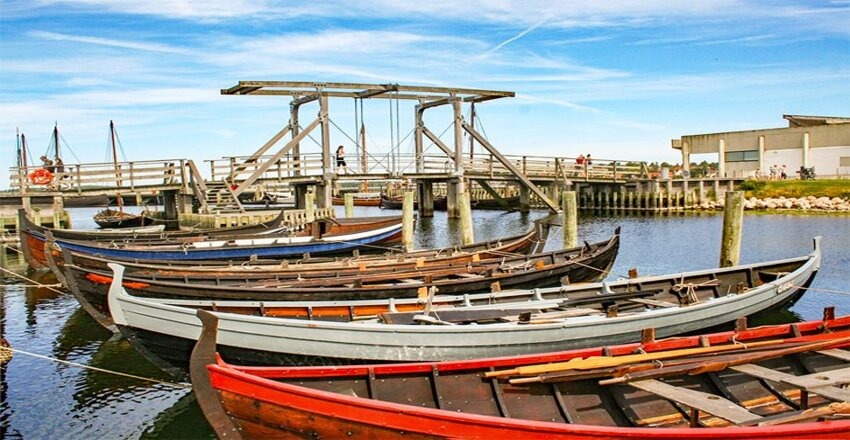
Viking Ship Museum in Roskilde, Denmark
14. Round Tower (Rundetårn) Copenhagen
The Copenhagen Round Tower is one of the most famous sights in Denmark, located in the city of Copenhagen. This tower with a height of 36 meters was built as an observatory in 1642 and depicts a great panoramic view of the city for visitors.
In the round tower of Copenhagen, you can find a small collection related to the famous Danish astronomer Tycho Brahe; However, the most outstanding part of this tower is its rooftop platform, which is built to enjoy the panoramic view of Copenhagen, which is in the form of a spiral staircase. This platform is suspended with a 25-meter glass floor, and from there you can not only watch the roofs of the houses of Copenhagen, but you can also see the floor of the tower. With a little walk around the old town, you can also visit the most beautiful square of the city called “Gråbrødretorv”.
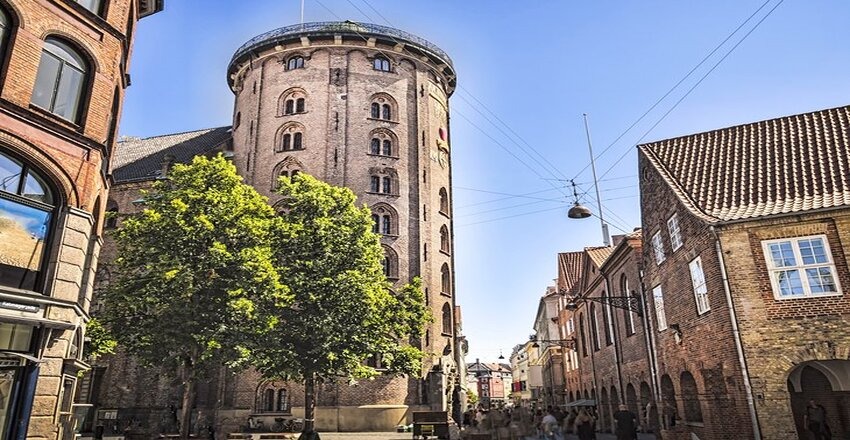
Round Tower (Rundetårn) Copenhagen
15. Amalienborg Palace, Copenhagen
Amalenburg Palace and its tranquil gardens can be found by the water in the Frederiksstaden neighborhood of Copenhagen, Denmark. Amalenburg consists of 4 palaces that were originally built for aristocrats to live in. After the Christiansborg fire incident in 1794, the Danish royal family took up residence in Amalenburg Palace, and the palace remained their winter residence.
These identical palaces together form an octagon, and it is claimed that this design is based on the design of a square in Paris, France, which later became the Place de la Concorde.
Amalenburg Palace was built in the Rococo style, which is an 18th century art style in Europe, and a combination of German and French elements can be seen in it.
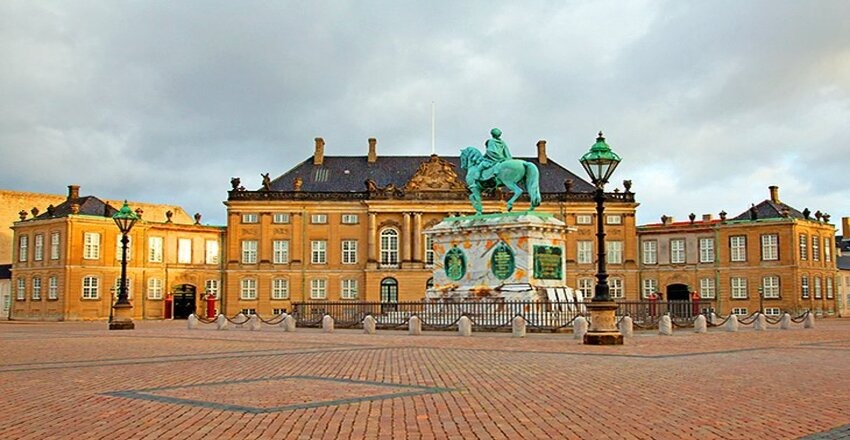
Amalienborg Palace, Copenhagen
16. Den Gamle By (Den Gamle By); Aarhus
The Aarhus Living History Museum (Den Gamle By) recreates the historical period of Denmark in 3 separate decades for visitors in a wonderful way. This museum is divided into 3 quarters, where you can find traces of Danish people’s life during the mid-19th century, 1020 and 1974. Each of these details, from the style of architecture, roads and businesses to local life and clothing, illustrate the process of how life has changed over the years and how some traditions remain sacred to this day.
In addition, this museum is home to several other separate museums, including the Danish Poster Museum, the 1927 Museum (Musaeum 1927), the Toy Museum, and the Decorative Arts Gallery.
Also, on the outskirts of Højbjerg is the Moesgaard Museum, which delves well into history and displays the development of culture in Denmark from the Stone Age, Bronze Age, Iron Age, and Viking Age, as well as Denmark in the Middle Ages. .
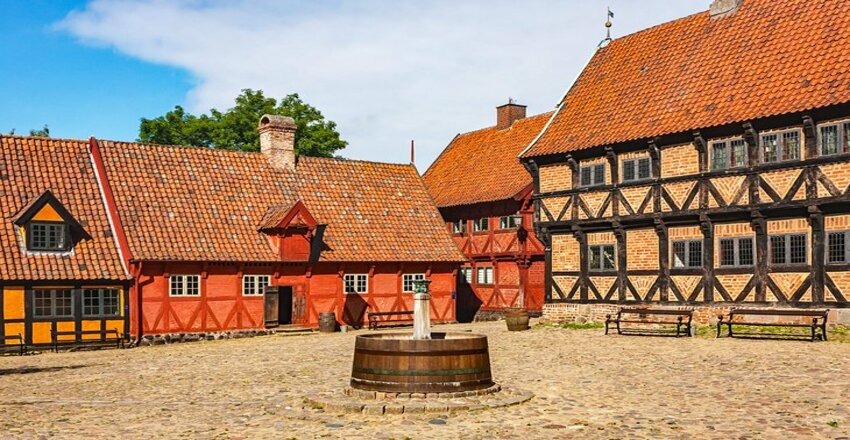
Den Gamle By
A brief look at the history of Denmark
Since the end of the ice age, approximately 10,000 BC, people migrated from the southern and eastern regions of Europe to the northern Europe, which the world knows today as Denmark.
Flat lands, fertile soil, proximity to water and its special climate have shaped Denmark’s history and culture to this day.
The occupation of the early people of Denmark was fishing and hunting, and from 3000 BC, agriculture began on the fertile soil of Denmark. During the Iron Age, the Danes began to establish trade links with the Roman Empire; In this way, animal fur and amber were among the popular export products of Denmark in that period (amber is a fossilized tree gum used since ancient times as a valuable gemstone, an element in perfumes and traditional medicine).
Gorgeous and fierce vikings
One of Denmark’s most infamous historical periods dates back to the Vikings. It is interesting to know that the most watched and popular series of Vikings is partly based on their real history. It was around the year 793 AD that the Vikings managed to settle in northern England, Yorkshire and the northwestern part of France, Normandy, after many ups and downs.
The Viking Age lasted about 250 years, and at one time Denmark, Norway, southern Sweden, Greenland, the Faroe Islands, Shetland, and Orkney were ruled by the Danish Viking king and his son.
In that period, the Vikings were able to travel to distant destinations such as Russia, Turkey, Andalusia, England, North America, and Greenland with their extraordinary skill in shipbuilding and sea navigation. engage in looting and robbery as well as engage in peaceful activities such as trade in precious metals, textiles, glassware, and animal furs. Even during the Viking period, the people of the plundered cities in Europe were enslaved and sold.
But today, Denmark and the Scandinavian region have a good economic situation and the quality and standard of living of its citizens is very high; And in terms of working position, security, well-being and comfort, it has a high rank. Denmark has a very low crime rate and a peaceful population; For this reason, every year many people from all over the world immigrate to Denmark to study or work in order to benefit from the prosperity and comfort of this country.

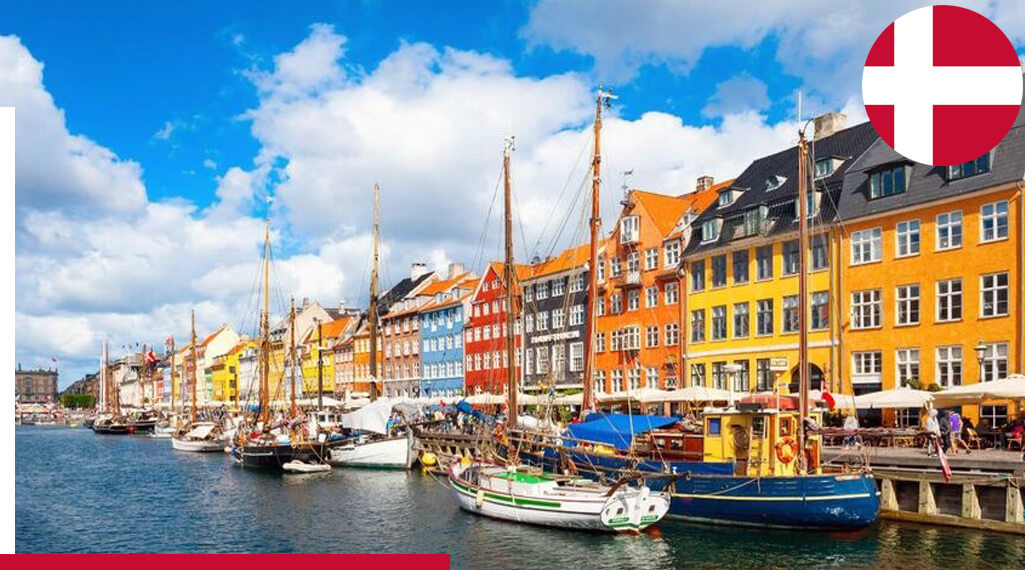
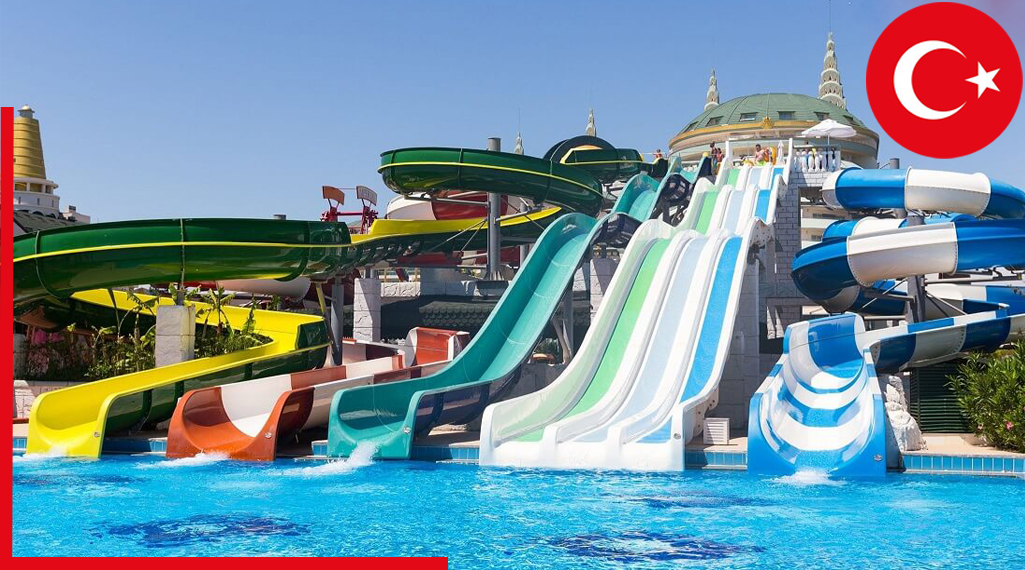
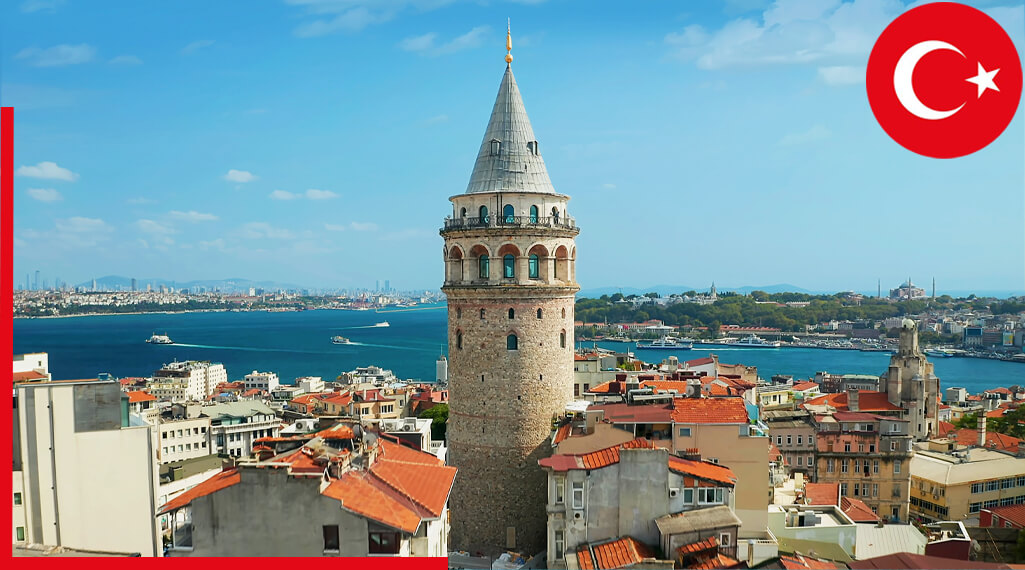
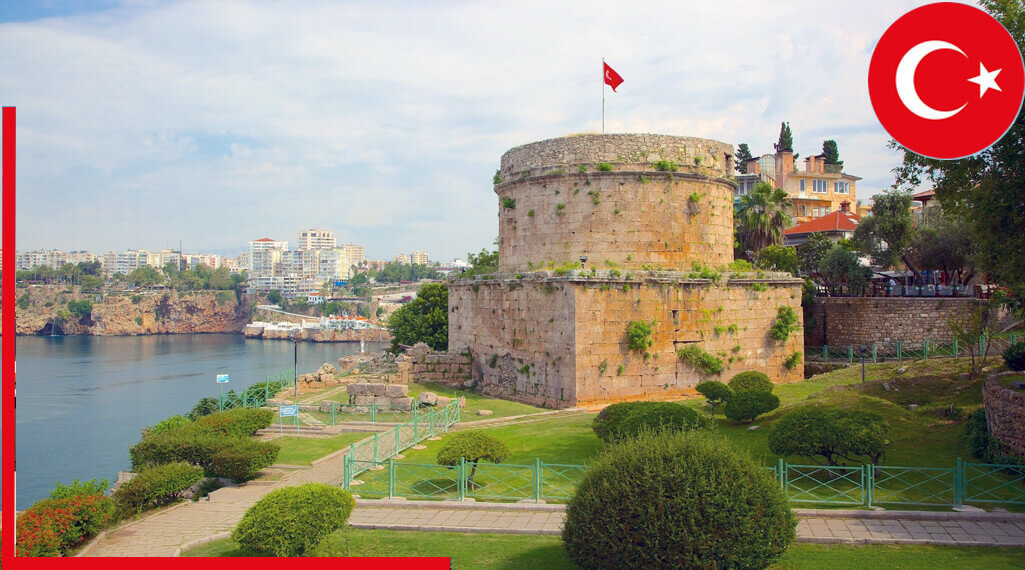
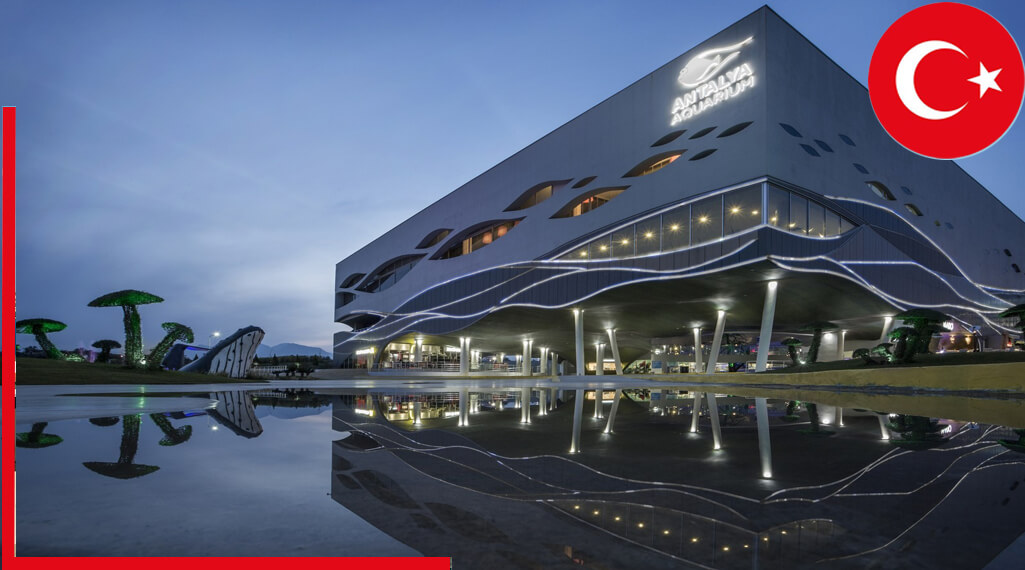

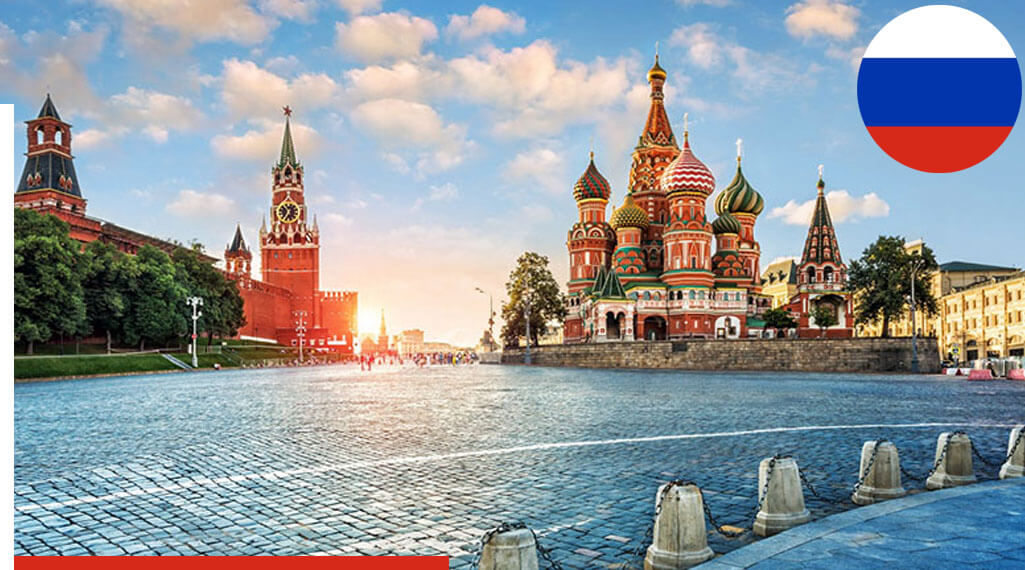
Recent Comments